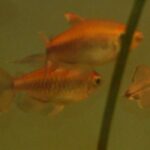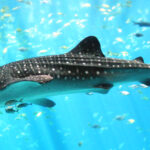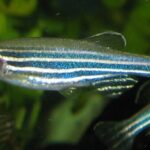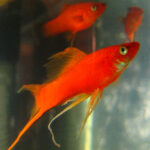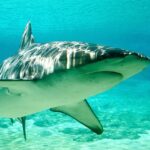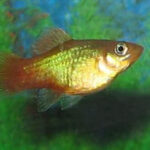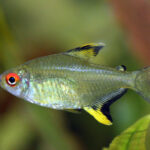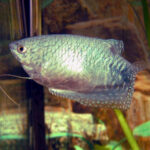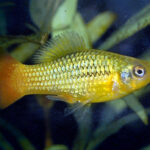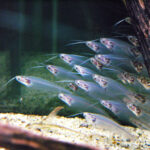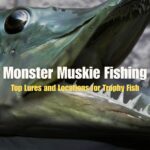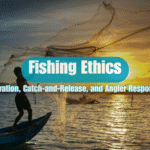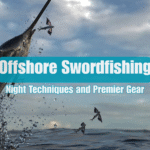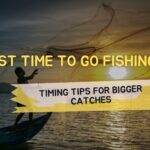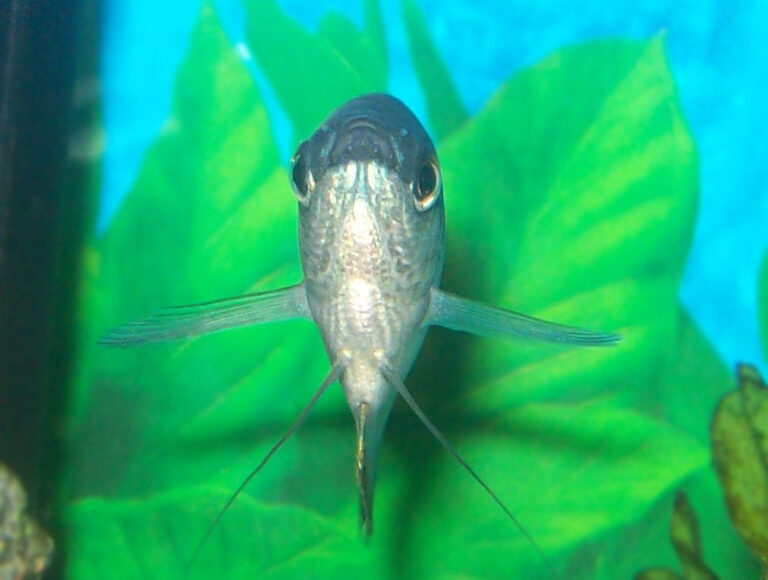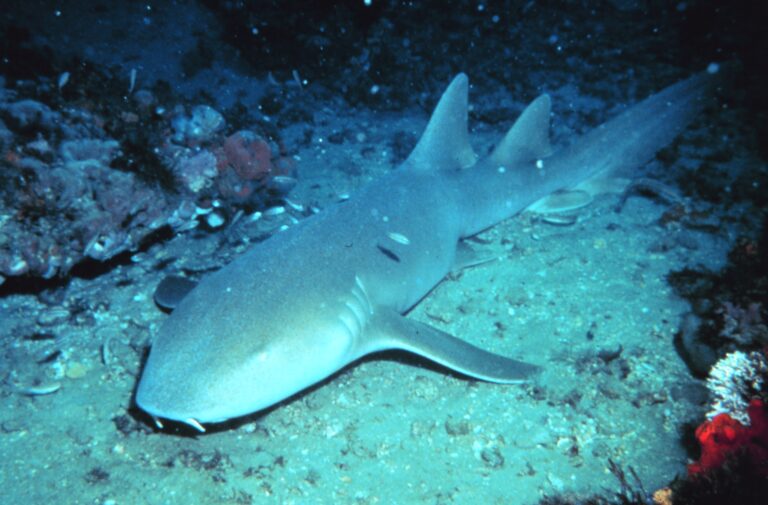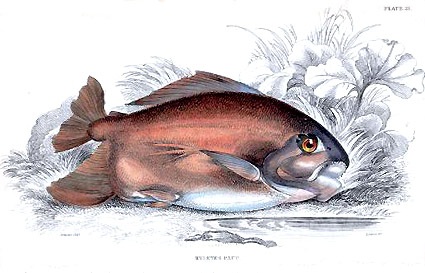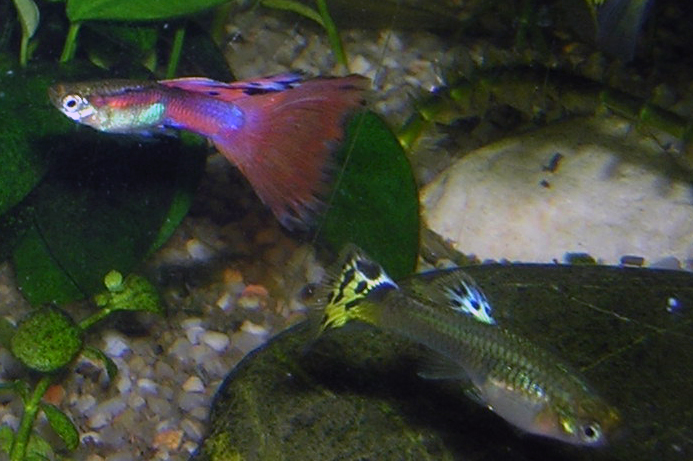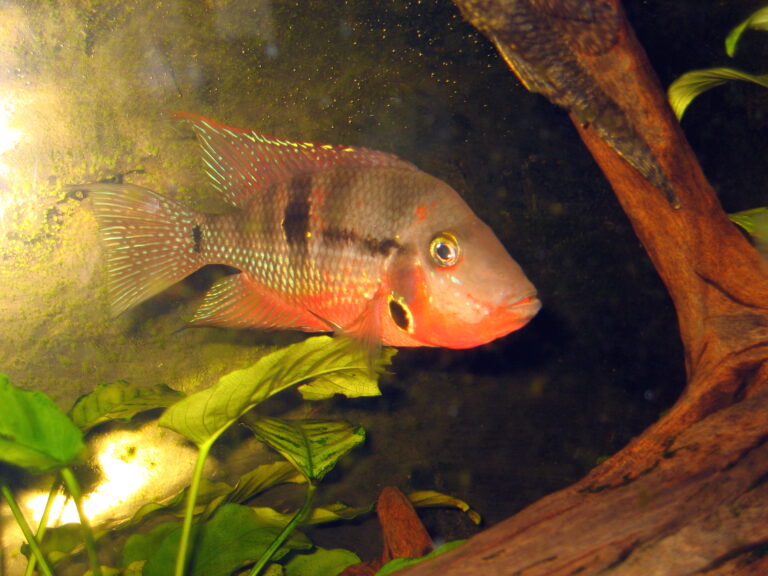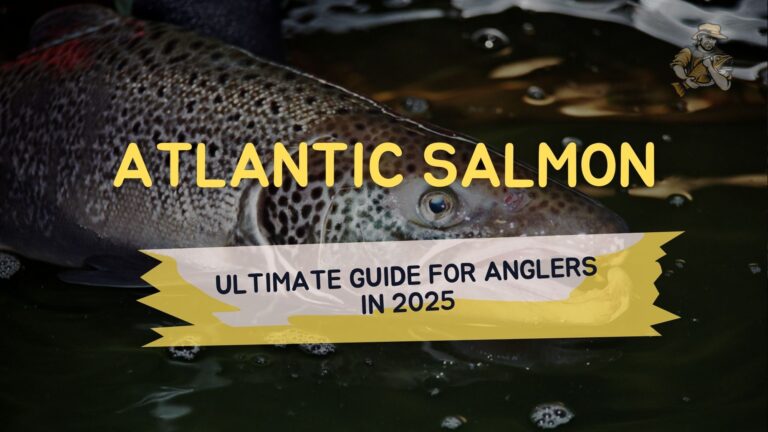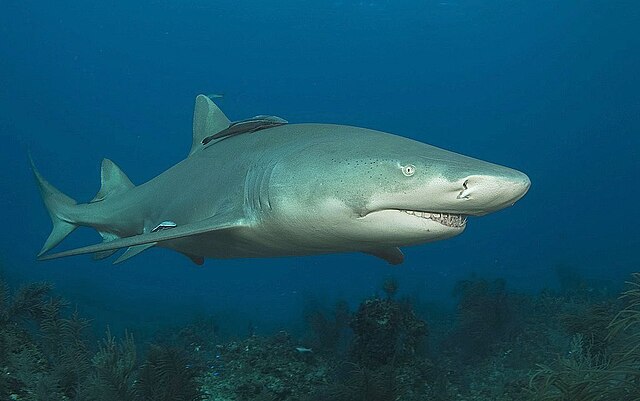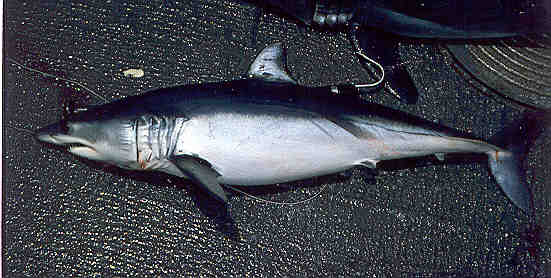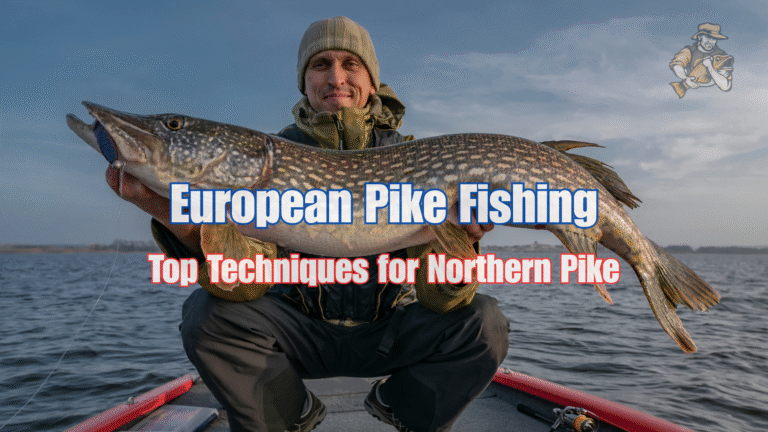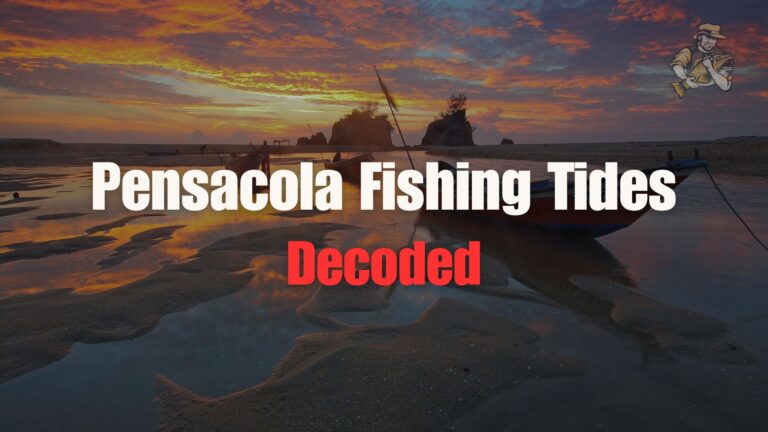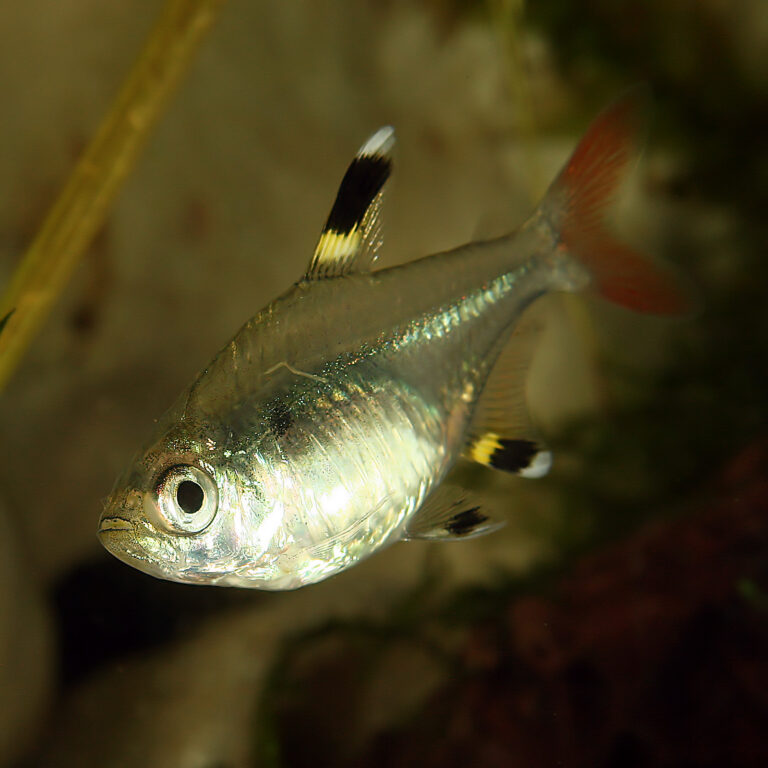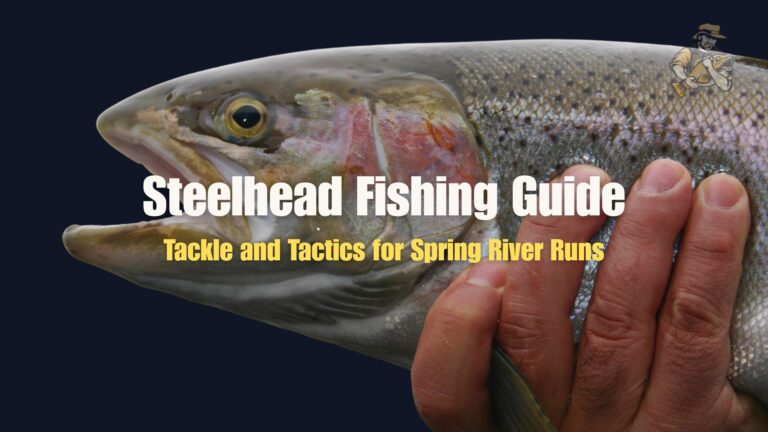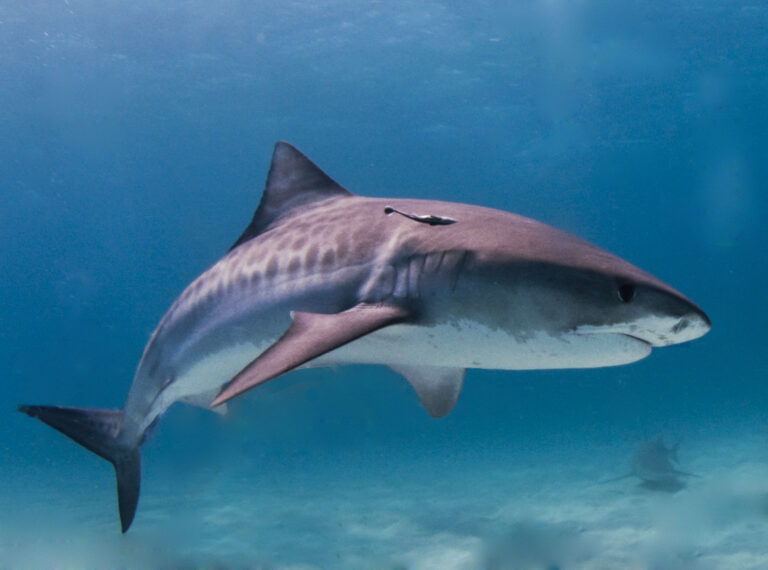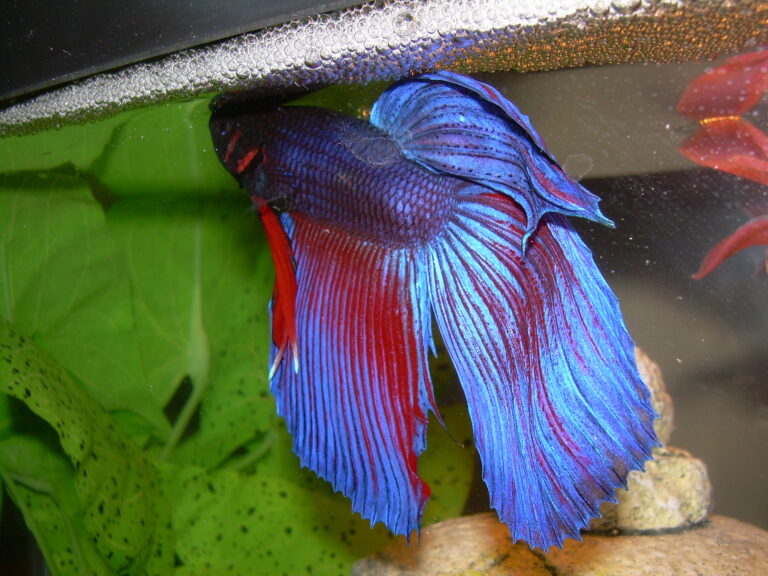Bubble Eye Goldfish
By Ryan Maron | Last Modified: July 3, 2025
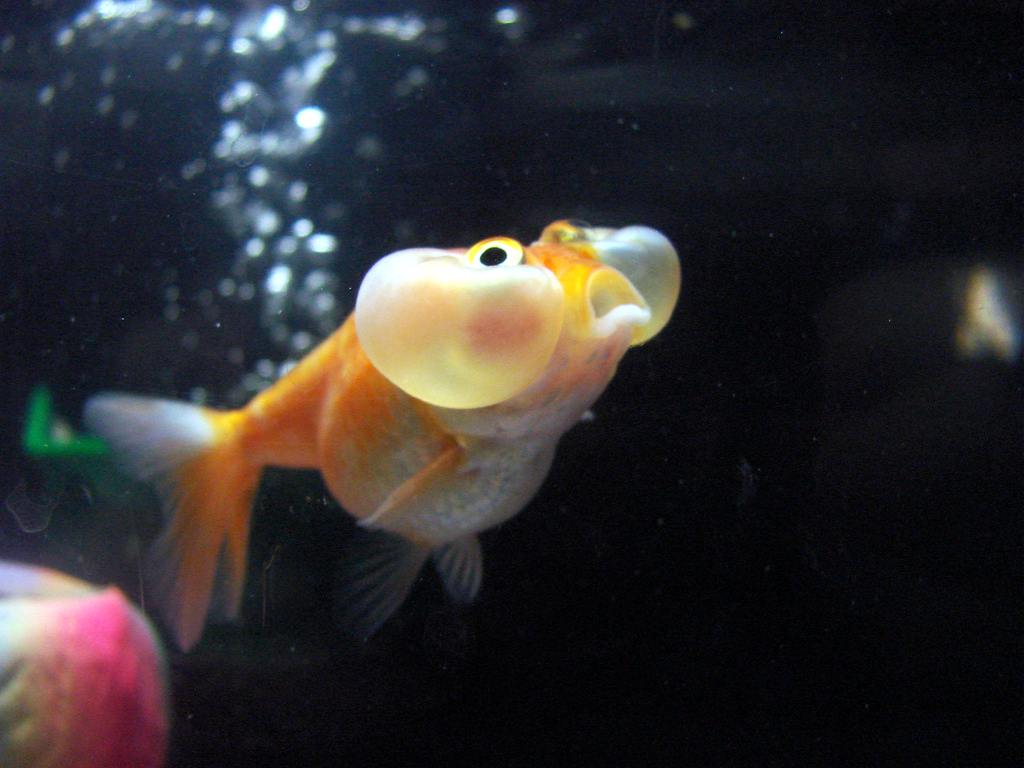
The Bubble Eye Goldfish stands as one of the most distinctive and recognizable varieties of ornamental goldfish, captivating aquarists worldwide with its extraordinary appearance and gentle demeanor. Known scientifically as *Carassius auratus*, this remarkable fish belongs to the fancy goldfish group and represents centuries of selective breeding that originated in China during the early 1900s. The Bubble Eye Goldfish derives its name from the prominent, fluid-filled sacs beneath each eye that create an unmistakable balloon-like appearance.
This unique variety plays a significant role in the global ornamental fish trade, serving as both a prized aquarium specimen and a living testament to the artistry of selective breeding. While not found in natural ecosystems, Bubble Eye Goldfish contribute to the aquaculture industry and provide educational opportunities for understanding genetic variation and breeding practices. Their delicate nature and specialized care requirements make them particularly valuable for experienced aquarists seeking to maintain rare and challenging species.
| Feature | Details |
|---|---|
| Common Name | Bubble Eye Goldfish |
| Scientific Name | Carassius auratus |
| Family | Cyprinidae |
| Typical Size | 15-20 cm (6-8 inches), 200-400 grams |
| Habitat | Aquarium environments |
| Diet | Omnivorous |
| Distribution | Global aquarium trade |
| Conservation Status | Domesticated variety |
Taxonomy & Classification
The Bubble Eye Goldfish belongs to the species *Carassius auratus*, within the family Cyprinidae, commonly known as the carp family. This extensive family encompasses over 3,000 species of freshwater fish, making it one of the largest fish families in the world. The genus *Carassius* includes several species of crucian carp, with *C. auratus* being the progenitor of all domestic goldfish varieties through selective breeding programs spanning over a millennium.
Within the goldfish classification system, the Bubble Eye Goldfish falls under the fancy goldfish category, specifically classified as a dorsalless variety. The absence of a dorsal fin distinguishes it from common goldfish and places it alongside other specialized breeds such as the Celestial Eye and the Lionhead. The breed’s taxonomic classification follows the standard hierarchy: Kingdom Animalia, Phylum Chordata, Class Actinopterygii, Order Cypriniformes, Family Cyprinidae, Genus *Carassius*, and Species *auratus*.
The Bubble Eye Goldfish represents a distinct phenotype within the species, characterized by specific genetic markers that control eye development and body structure. Genetic studies have revealed that the bubble eye trait results from recessive alleles affecting cartilage development around the orbital region. These genetic factors demonstrate the remarkable plasticity of the goldfish genome and its responsiveness to selective breeding pressure.
Physical Description
The most striking feature of the Bubble Eye Goldfish is undoubtedly the large, fluid-filled sacs that develop beneath each eye, typically appearing when the fish reaches 6-9 months of age. These sacs, technically called pseudobranchial swellings, can grow to enormous proportions relative to the fish’s head size, sometimes measuring up to 25% of the total body length. The sacs contain lymphatic fluid and are covered by a thin, translucent membrane that gives them their characteristic balloon-like appearance.
The body structure of Bubble Eye Goldfish exhibits the typical egg-shaped profile common to fancy goldfish varieties, with a compressed, rounded form that lacks the streamlined efficiency of wild-type goldfish. Adult specimens typically reach lengths of 15-20 centimeters, with exceptional individuals growing up to 25 centimeters under optimal conditions. The absence of a dorsal fin creates a smooth, curved back profile that enhances the fish’s distinctive silhouette.
Coloration in Bubble Eye Goldfish displays considerable variation, with common color patterns including solid orange, red-orange combinations, calico (red, orange, black, and white patches), chocolate brown, and metallic variations. The scales can exhibit either a metallic or nacreous finish, with nacreous fish displaying a matte appearance with varying degrees of transparency. The fins are typically delicate and proportionally smaller than those found in standard goldfish varieties, contributing to the breed’s reduced swimming ability.
The head structure features upward-facing eyes positioned above the bubble sacs, creating a unique visual perspective that affects the fish’s feeding behavior and spatial awareness. The mouth is typically small and positioned slightly downward, adapted for bottom-feeding activities. The gill covers are well-developed, though the overall respiratory efficiency may be compromised due to the altered head structure.
Habitat & Distribution
As a domesticated variety, Bubble Eye Goldfish do not occur naturally in wild environments and are exclusively found in human-maintained aquatic systems. Their distribution is entirely dependent on the global aquarium trade, with breeding facilities and hobbyist collections spanning across Asia, Europe, North America, and other regions where ornamental fish keeping is practiced. The primary production centers remain in China, Thailand, Malaysia, and several other Southeast Asian countries where commercial goldfish breeding has been established for decades.
In captive environments, Bubble Eye Goldfish require carefully controlled conditions that differ significantly from those suitable for hardier goldfish varieties. Optimal water temperature ranges between 18-22°C (65-72°F), with stable parameters being more critical than specific values. The water pH should be maintained between 6.5-7.5, with moderate hardness levels of 5-15 dGH. These fish demonstrate poor tolerance for temperature fluctuations and require gradual acclimatization to any environmental changes.
The physical environment must accommodate the unique limitations imposed by the bubble eye structure. Sharp objects, aggressive tank mates, and strong water currents pose significant risks to the delicate eye sacs. Aquarium design typically emphasizes smooth surfaces, gentle filtration systems, and carefully selected substrate materials. Sand or fine gravel substrates are preferable to coarse materials that might damage the eye sacs during feeding activities.
Bubble Eye Goldfish thrive in well-established aquarium systems with efficient biological filtration and regular water changes. The minimum recommended tank size is 75-100 liters for a single specimen, with additional space required for each additional fish. Unlike wild goldfish that inhabit various freshwater environments, these domesticated varieties cannot survive in natural water bodies due to their reduced swimming ability and increased vulnerability to predation.
Diet & Feeding Behavior
Bubble Eye Goldfish exhibit omnivorous feeding behavior characteristic of their species, consuming a varied diet of plant matter, small invertebrates, and commercial fish foods. Their feeding strategy has been modified by selective breeding, with the altered head structure and eye position affecting their ability to locate and capture food efficiently. The downward-angled mouth orientation makes them particularly well-suited for bottom-feeding activities, though they can also feed at mid-water and surface levels when necessary.
In aquarium environments, the diet should consist of high-quality commercial goldfish pellets or flakes as the primary food source, supplemented with fresh and frozen foods to ensure nutritional completeness. Suitable supplements include blanched vegetables such as peas, spinach, and lettuce, along with protein sources like bloodworms, brine shrimp, and daphnia. The feeding frequency should be 2-3 small meals per day rather than single large feedings, as this approach reduces the risk of digestive issues and maintains better water quality.
The unique eye structure creates specific feeding challenges that require careful management. Bubble Eye Goldfish often have difficulty competing with faster-swimming tank mates for food, necessitating separate feeding areas or specialized feeding techniques. Sinking pellets are generally preferred over floating foods, as the fish’s upward-facing eyes make surface feeding more challenging. The eye sacs can obstruct vision and make precise food targeting difficult, often requiring longer feeding periods to ensure adequate consumption.
Feeding behavior patterns typically involve methodical bottom-searching activities, with the fish using their barbels and mouth to locate food particles. Unlike their wild counterparts that may travel significant distances while foraging, aquarium specimens develop more localized feeding territories within their confined environment. The reduced swimming ability affects their capacity to pursue mobile prey items, making them more dependent on stationary or slow-moving food sources.
Behavior & Adaptations
The behavioral patterns of Bubble Eye Goldfish reflect significant adaptations to their altered physical structure, with most activities modified to accommodate the prominent eye sacs and reduced mobility. Swimming behavior is characterized by slow, deliberate movements that minimize stress on the delicate eye membranes. The fish typically employ a hovering swimming style, using gentle fin movements to maintain position rather than the rapid directional changes common in more streamlined goldfish varieties.
Social behavior in Bubble Eye Goldfish demonstrates the peaceful temperament typical of fancy goldfish breeds, with minimal aggression toward conspecifics or other compatible species. However, their reduced swimming ability makes them vulnerable to harassment from more active tank mates, particularly during feeding periods. These fish often establish loose territorial boundaries within aquarium environments, though these territories are more related to preferred resting areas than defended feeding zones.
The altered sensory capabilities resulting from the eye structure modifications create unique adaptive behaviors. Bubble Eye Goldfish rely more heavily on their lateral line system and chemoreception for navigation and food detection, as their visual acuity is compromised by the eye sac positioning. This enhanced dependence on non-visual senses makes them particularly sensitive to water movement patterns and chemical gradients within their environment.
Resting behavior patterns differ significantly from wild-type goldfish, with Bubble Eye specimens spending more time in stationary positions near the bottom of their habitat. The energy expenditure required for continuous swimming is higher due to their less efficient body shape, leading to more frequent rest periods. These fish often seek shelter among plants or decorations, using these structures to support their body weight and reduce swimming effort.
Stress responses in Bubble Eye Goldfish are often more pronounced than in hardier varieties, with environmental changes, handling, or aggressive tank mates potentially causing behavioral changes and health issues. The eye sacs can become damaged through contact with sharp objects or aggressive interactions, leading to secondary infections and altered behavior patterns.
Reproduction & Life Cycle
The reproductive biology of Bubble Eye Goldfish follows the general pattern established by their species, though the breeding process requires careful management due to the physical limitations imposed by their specialized anatomy. Sexual maturity typically occurs between 1-2 years of age, coinciding with the full development of the characteristic eye sacs. Sex determination can be challenging in young specimens, but mature males develop breeding tubercles on their gill covers and pectoral fins during spawning season.
Spawning behavior is triggered by environmental cues including temperature changes, photoperiod manipulation, and improved nutrition. The optimal breeding temperature range is 20-24°C (68-75°F), with gradual temperature increases simulating natural seasonal transitions. Males exhibit chasing behavior and will pursue females around the breeding environment, though this activity is less vigorous than in more streamlined goldfish varieties due to the reduced swimming capabilities of both sexes.
The spawning process involves the female scattering adhesive eggs among fine-leaved plants or spawning mops, with males immediately fertilizing the eggs externally. A single spawning event can produce 1,000-5,000 eggs, depending on the female’s size and condition. The eggs are approximately 1.5 millimeters in diameter and will hatch within 4-7 days at optimal temperatures. Parental care is absent, and adults may consume eggs if not removed from the breeding environment.
Larval development follows the standard goldfish pattern, with newly hatched fry initially feeding on their yolk sacs before transitioning to external food sources. The distinctive eye sacs begin developing around 6-9 months of age, though individual variation in development timing is considerable. Not all offspring will display the bubble eye trait, as the genetic factors involved follow complex inheritance patterns that may require multiple generations of selective breeding to achieve desired characteristics.
The breeding of Bubble Eye Goldfish requires expertise in genetic management to maintain the desired traits while avoiding the health problems associated with extreme physical modifications. Successful breeding programs must balance the aesthetic goals of enhanced eye sac development with the practical requirements of producing healthy, viable offspring capable of normal biological functions.
Predators & Threats
In their exclusively aquarium-based existence, Bubble Eye Goldfish face a unique set of threats that differ significantly from those encountered by wild fish species. The most immediate physical threats stem from their delicate eye sacs, which are vulnerable to puncture, tearing, or rupture from contact with sharp objects, aggressive tank mates, or rough handling during maintenance procedures. These injuries can lead to secondary bacterial infections, permanent disfigurement, or death if not promptly treated.
Biological threats include various pathogens that exploit the compromised immune systems often associated with highly bred ornamental fish. Bacterial infections such as fin rot, dropsy, and gill disease pose significant risks, particularly when water quality parameters are suboptimal. Parasitic infections including ich, flukes, and anchor worms can be particularly devastating to Bubble Eye Goldfish due to their reduced swimming ability and stress susceptibility.
The limited swimming capabilities of Bubble Eye Goldfish make them vulnerable to more aggressive fish species that might normally coexist peacefully with standard goldfish varieties. Fast-swimming tank mates can cause stress through constant harassment, leading to reduced feeding success and increased susceptibility to disease. Even non-aggressive species may inadvertently damage the eye sacs through normal swimming activities in confined spaces.
Environmental threats encompass various aquarium management challenges that can prove fatal to these sensitive fish. Rapid temperature fluctuations, poor water quality, inadequate filtration, and inappropriate tank setup all represent significant risks. The species’ reduced tolerance for environmental stress makes them particularly vulnerable to seemingly minor changes that hardier fish varieties might easily tolerate.
Human-related threats include improper handling during transport, inadequate quarantine procedures, and inexperienced care that fails to account for the special requirements of this breed. The commercial breeding industry sometimes prioritizes extreme physical traits over health considerations, potentially producing specimens with compromised vitality and increased susceptibility to various health problems.
Conservation Status
As a domesticated variety of *Carassius auratus*, the Bubble Eye Goldfish does not have a formal conservation status designation from organizations such as the IUCN, as it represents a human-created breed rather than a naturally occurring species or subspecies. However, the conservation context for this variety involves maintaining genetic diversity within breeding populations and preserving the specialized knowledge required for successful husbandry and reproduction.
The genetic foundation of Bubble Eye Goldfish depends on carefully managed breeding programs that must balance the aesthetic goals of enhanced eye sac development with the biological requirements for healthy, viable offspring. Inbreeding depression poses a significant threat to the long-term sustainability of the breed, necessitating outcrossing with related goldfish varieties to maintain genetic diversity while preserving desired traits.
Commercial breeding operations, primarily located in Southeast Asia, maintain the largest populations of Bubble Eye Goldfish and serve as the primary reservoirs for the breed’s genetic material. These facilities face economic pressures that may prioritize short-term profit over long-term genetic sustainability, potentially leading to reduced genetic diversity and increased health problems in commercial stocks.
The specialized knowledge required for successful Bubble Eye Goldfish breeding and maintenance represents a form of cultural heritage that requires preservation and transmission to future generations of aquarists and breeders. This knowledge encompasses understanding of genetic inheritance patterns, optimal husbandry techniques, disease prevention strategies, and breeding methodologies specific to this challenging variety.
International trade regulations and aquatic animal welfare standards increasingly influence the production and distribution of ornamental fish species, with potential implications for breeds like the Bubble Eye Goldfish that may be considered to have compromised welfare due to their extreme physical modifications. Future conservation efforts may need to address the ethical considerations surrounding the breeding of fish with potentially debilitating physical traits.
Human Interaction
The relationship between humans and Bubble Eye Goldfish represents a complex intersection of aesthetic appreciation, cultural tradition, and animal welfare considerations. These fish exist solely through human intervention and have been shaped by centuries of selective breeding to achieve their distinctive appearance. The breed’s development reflects the historical Chinese cultural appreciation for unique and unusual forms in ornamental animals, with the eye sacs considered a mark of distinction and beauty.
In contemporary aquarium keeping, Bubble Eye Goldfish occupy a specialized niche that attracts experienced hobbyists seeking unique and challenging species. Their care requirements demand a higher level of expertise and commitment than most goldfish varieties, making them unsuitable for beginning aquarists or casual fish keepers. The financial investment required for proper housing, equipment, and veterinary care when needed often exceeds that of more common aquarium species.
The commercial trade in Bubble Eye Goldfish involves numerous stakeholders including breeders, wholesalers, retailers, and end consumers. Quality specimens command premium prices in the ornamental fish market, with exceptional individuals potentially worth hundreds of dollars. This economic value drives continued breeding efforts but also creates incentives for mass production methods that may compromise individual fish welfare.
Educational opportunities presented by Bubble Eye Goldfish include lessons in genetics, selective breeding principles, and the ethical considerations surrounding animal modification for aesthetic purposes. These fish serve as living examples of human influence on animal evolution and the potential consequences of extreme selective breeding practices.
The species has gained recognition in popular culture and social media, where their unusual appearance generates significant interest and discussion. This attention has both positive and negative implications, potentially increasing demand while also raising awareness of the specialized care requirements and ethical considerations associated with their breeding and maintenance.
Veterinary medicine has developed specialized protocols for treating Bubble Eye Goldfish, with particular attention to eye sac injuries and related complications. Advanced goldfish varieties like the Bubble Eye have contributed to the development of aquatic veterinary expertise and treatment methodologies that benefit the broader ornamental fish industry.
Interesting Facts
The development of the bubble eye trait in goldfish represents one of the most extreme examples of morphological modification achieved through selective breeding in ornamental fish. The eye sacs can grow to such proportions that they may contain more fluid volume than the fish’s brain cavity, creating a remarkable biological anomaly that challenges our understanding of sustainable animal modification.
Bubble Eye Goldfish possess a unique swimming style that has been compared to underwater flight, with their movements resembling those of a small blimp navigating through water. This distinctive locomotion pattern results from their altered body proportions and center of gravity, which has shifted due to the massive eye sacs and absence of a dorsal fin.
The fluid within the eye sacs is not static but undergoes continuous circulation and renewal through the fish’s lymphatic system. This physiological process requires significant metabolic energy and contributes to the increased nutritional requirements of Bubble Eye Goldfish compared to their standard goldfish counterparts.
Historical records suggest that the first Bubble Eye Goldfish appeared in Chinese breeding programs during the early 1900s, making them a relatively recent addition to the goldfish family tree. However, their rapid acceptance and proliferation throughout Asia demonstrates the strong cultural appreciation for unique physical traits in ornamental animals.
The eye sacs of Bubble Eye Goldfish can regenerate to some extent if damaged, though the regrown tissue rarely matches the original size or appearance. This regenerative capacity provides some protection against minor injuries but is insufficient to repair major trauma to the delicate structures.
Some Bubble Eye Goldfish develop asymmetrical eye sacs, with one sac growing significantly larger than the other. While this asymmetry is generally considered undesirable in breeding programs, it provides insight into the genetic and developmental factors controlling eye sac formation.
The breed has inspired artistic representations in various cultures, with sculptures, paintings, and decorative objects featuring the distinctive bubble eye appearance. These artistic interpretations often exaggerate the eye sacs even further, creating fantastical representations that exceed the biological limitations of actual fish.
Temperature changes can cause temporary fluctuations in eye sac size, with cooler water typically causing slight reduction in volume and warmer water promoting expansion. This phenomenon reflects the dynamic nature of the fluid-filled structures and their sensitivity to environmental conditions.
Frequently Asked Questions
Can Bubble Eye Goldfish live with other goldfish varieties?
Bubble Eye Goldfish can coexist with other slow-swimming, peaceful goldfish varieties, but they should not be housed with faster, more aggressive types. Compatible tank mates include other fancy goldfish such as Ryukin goldfish, Orandas, and Lionheads. The key is ensuring all fish have similar swimming abilities and temperaments to prevent competition for food and potential injury to the delicate eye sacs.
How do you treat a damaged eye sac in a Bubble Eye Goldfish?
If an eye sac becomes punctured or damaged, immediate action is required to prevent infection. The affected fish should be moved to a quarantine tank with pristine water conditions and treated with appropriate antibacterial medications as recommended by an aquatic veterinarian. Minor damage may heal naturally, but severe injuries often require professional veterinary intervention and may result in permanent changes to the eye sac appearance.
What is the lifespan of Bubble Eye Goldfish?
With proper care, Bubble Eye Goldfish can live 10-15 years, though their lifespan is often shorter than that of hardier goldfish varieties due to their increased susceptibility to health problems. Factors affecting longevity include water quality, diet, tank setup, and genetic health of the individual fish. Specimens from quality breeding programs with good genetic backgrounds tend to have better longevity prospects.
Are Bubble Eye Goldfish suitable for outdoor ponds?
Bubble Eye Goldfish are generally not suitable for outdoor pond environments due to their reduced swimming ability, vulnerability to predation, and sensitivity to temperature fluctuations. Their delicate eye sacs are easily damaged by pond plants, rocks, or other fish, and they cannot compete effectively with hardier varieties for food. These fish are best maintained in controlled indoor aquarium environments where their special needs can be properly addressed.
Conclusion
The Bubble Eye Goldfish represents a remarkable example of selective breeding artistry and the complex relationship between human aesthetic preferences and animal welfare. While these extraordinary fish captivate observers with their unique appearance and gentle nature, they also embody the responsibilities inherent in maintaining highly specialized ornamental species. Their continued existence depends on dedicated breeding programs, expert husbandry practices, and a commitment to balancing the preservation of distinctive traits with the fundamental requirement for healthy, viable animals capable of expressing natural behaviors within their modified capabilities.
Share The Article:
More Fish Species:
-
Blue Gourami
The Blue Gourami (*Trichogaster trichopterus*) stands as one of the most recognizable and adaptable freshwater fish species in tropical…
-
Nurse Shark
The Nurse Shark (Ginglymostoma cirratum) stands as one of the most recognizable and ecologically significant bottom-dwelling sharks in tropical…
-
Pacu Fish
Pacu fish represent one of South America’s most ecologically significant freshwater species, encompassing several closely related members of the…
-
Guppy
The Guppy (Poecilia reticulata) stands as one of the most recognizable and extensively studied freshwater fish species in the…
-
Firemouth Cichlid
The Firemouth Cichlid (*Thorichthys meeki*) stands as one of Central America’s most recognizable freshwater fish species, distinguished by its…
-
Severum Cichlid
The Severum Cichlid represents one of South America’s most recognizable and ecologically significant freshwater fish species. Known scientifically as…
Discover
-
Atlantic Salmon: Ultimate Guide for Anglers in 2025
For as long as I can remember, I’ve been captivated by Atlantic salmon fishing. There’s something almost mystical about…
-
Spinner Shark
The Spinner Shark (Carcharhinus brevipinna) stands as one of the ocean’s most distinctive and acrobatic predators, earning its name…
-
Lemon Shark
The Lemon Shark (*Negaprion brevirostris*) represents one of the most scientifically studied and ecologically significant predators in coastal marine…
-
Fishing in Long Beach: Best Guide (Local Secrets Revealed)
There’s something magical about casting a line along the Southern California coast, especially when fishing in Long Beach. I’ve…
-
Shortfin Mako Shark
The Shortfin Mako Shark stands as one of the ocean’s most remarkable predators, combining exceptional speed with sophisticated hunting…
-
European Pike Fishing: Top Techniques for Northern Pike
I still remember my first encounter with European pike fishing methods. It was during a trip to Sweden about…
Discover
-
Pensacola Fishing Tides Decoded: Fish More, Catch More
Look, I’ve spent the better part of my fishing life getting absolutely schooled by Pensacola’s tides. Just last month,…
-
Pristella Tetra
The Pristella Tetra (Pristella maxillaris) stands as one of South America’s most distinctive freshwater aquarium species, renowned for its…
-
Dalmatian Molly
The Dalmatian Molly stands as one of the most recognizable and beloved freshwater aquarium fish, distinguished by its striking…
-
Steelhead Fishing Guide: Tackle and Tactics for Spring River Runs
There’s something almost magical about standing waist-deep in a frigid spring river, feeling the current push against your legs…
-
Tiger Shark
The Tiger Shark (Galeocerdo cuvier) represents one of the ocean’s most formidable apex predators, earning its distinctive name from…
-
Siamese Fighting Fish
The Siamese Fighting Fish, scientifically known as *Betta splendens*, stands as one of the most recognizable and culturally significant…

